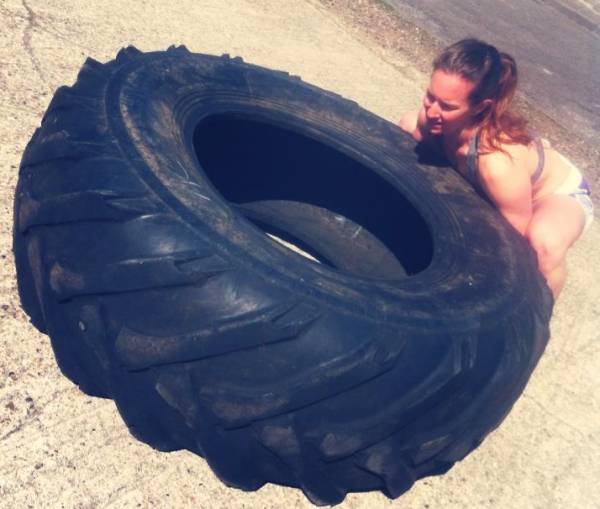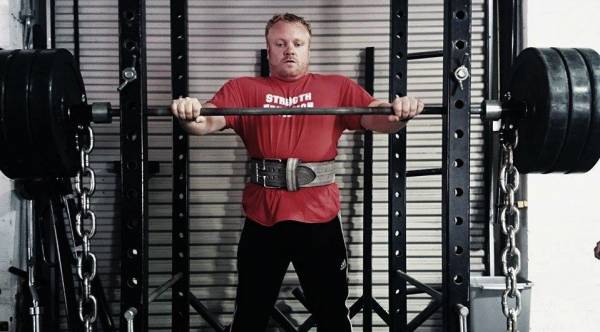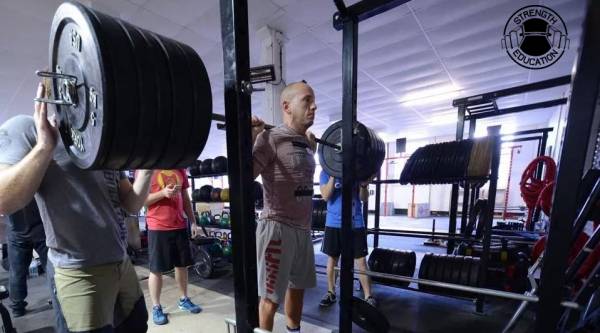I love the turn of the new year. For me, New Year’s Day beats Christmas hands down. I find the period of reflection and resolution useful, profound, and enjoyable.
However, during this time of excess, it’s easy to get carried away and set larger-than-life goals that fail (at best) or leave you burned out and injured a few months down the line (at worst).
This article takes five typical strength training resolutions and explains why more is not always more. This year, it’s your mission to create resolutions that genuinely stick in the long term.
Typical: I’m going to enter loads of competitions.
I see this all the time. You need something to focus yourself. What better than a competition, right? The chance to test yourself, pit yourself against others, and showcase your strength. It makes a lot of sense. But just like anything, you can have too much of a good thing.
This Year: I’m going to focus on long-term athlete development.
The danger is that competitions take over and your training becomes recovery from one competition immediately followed by preparation for the next one. This is no way to become better at what you do on a long-term basis, and will have more of an effect on your body than you realize.
SICK OF GOAL SETTING? Screw Goals: It’s All About Your System
By all means compete, but allow yourself time in between to let your body recover and to hit a good period of training so you can make a marked improvement when it comes to testing time again. And please stop telling me it’s only six lifts, nine lifts, or a few minutes of work. The ups and downs of competition have a crazy effect on your nervous system. Be mindful of this.
Typical: I’m going to train loads more.
This comes in many shapes and forms, but generally includes a leap from once or twice a week, to four or five times a week. Or sometimes, from zero times a week to training every day.

This Year: I’m going to train once more each week.
There were reasons you didn’t train all those times a week this year. So first, determine what those reasons were (and probably still are) and fix them. Otherwise the reasons will keep stopping you.
“Imagine if you went from training two times a week to three times a week. That’s a 50% increase. Would you take a 50% increase in wages?”
Then take a step forward, but not 27 steps forward. Commit to one extra training session per week. But really commit to it. Imagine if you went from training two times a week to three times a week. That’s a 50% increase. Would you take a 50% increase in wages? Pretty sure the thought of asking for 150% increase (two days a week to five days a week) wouldn’t even enter your head.
RELATED: 4 Keys for Making and Keeping Your New Year’s Resolution
Typical: I’m going to add loads of stuff into my training.
This is an understandable line of thought. And the vast expanse of information on the Internet doesn’t help (aside from this article, of course). Every day, you are bombarded with things you “should” be adding to your training. Sooner or later, you end up with an unmanageable training plan that either leaves you over-trained or missing sessions – or both.
This Year: I’m going to take loads of stuff out of my training.
Here’s a challenge for you: how much stuff can you take out of your training and still get all of the benefits? Think of the 80/20 principle. Which 20% of your training is giving you 80% of the benefits? Obviously this is not an exact science, but you get the idea.
PRACTICE 80/20 WITH FOOD: How to Create Nutritional Plans That Stick
Determine what your base movements are, what exercises keep you ticking over, and which parts of your training have a wide and deep impact on your strength. Keep this stuff in and cut the rest out.
“How much stuff can you take out of your training and still get all of the benefits? Think of the 80/20 principle. Which 20% of your training is giving you 80% of the benefits?”
Then build it up again slowly, adding or changing one thing at a time to see what makes a difference. This way you can build a modular program that is individual to you. This gives you a framework to add in anything new you want to try, and then continue to include it or dismiss it as appropriate. If something works for you, keep it in. If it doesn’t take it out.

Typical: I’m going to do loads more of all the stuff I don’t like.
We all know the drill – you don’t do these particular movements because you’re rubbish at them, and you’re rubbish at them because you don’t like them. So, said movements don’t get practiced.
This Year: I’m going to pick one thing I’m bad at and get better.
Immersing yourself in your weaknesses may seem like a good idea, but diving into a pool of stuff you’re not good at without due thought and structure is a recipe for burnout. And quite possibly boredom, too. I’m a firm believer in enjoying what you do.
WHAT’S YOUR MOTIVATION? The Difference Between Fear and Love in Fitness
But it’s not just about picking one thing instead of picking lots of things. It’s about figuring out how important a weakness actually is, and improving on it in a progressive and structured manner. Because if it’s not important, why spend valuable time and energy on it? Just because you’re bad at it doesn’t necessarily mean you need to work on it.
Typical: I’m going to lift loads of weight.
Ah yes, lifting loads of weight. That’s what we all want to do, right? And surely the best way to go about lifting loads of weight is, well, lifting loads of weight, a lot? Sure, if you want to risk messing yourself up and prevent yourself from getting stronger in a sustainable and scalable manner.

This Year: I’m going to get stronger.
Lifting heavier and getting stronger are not the same thing. Lifting heavier doesn’t necessarily make you stronger. But getting stronger will allow you to lift heavier. Which one do you want now? And you are already far stronger than you realize.
“[A]lmost all of the time, your heavy reps should leave something in the tank rather than pushing to your limit.”
The trick is getting your nervous system to allow you to push heavier and heavier weights. And that comes from learning how to use your body as a whole and convincing your brain what you are lifting is within your body’s capabilities. Which means that almost all of the time, your heavy reps should leave something in the tank rather than pushing to your limit.
MAKE BETTER RESOLUTIONS: Use Your Inner Coach to Set SMART Goals
What Resolution Are You Making?
This time of year is full of abundance and excess, so it’s no wonder these sentiments flow over into our New Year’s resolutions. But this year, think about creating focused, minimalist, measurable resolutions you won’t quit on. Remember – the best resolution is the one you can keep.
Post your resolutions to the comments below.
Photos courtesy of Strength Education.






